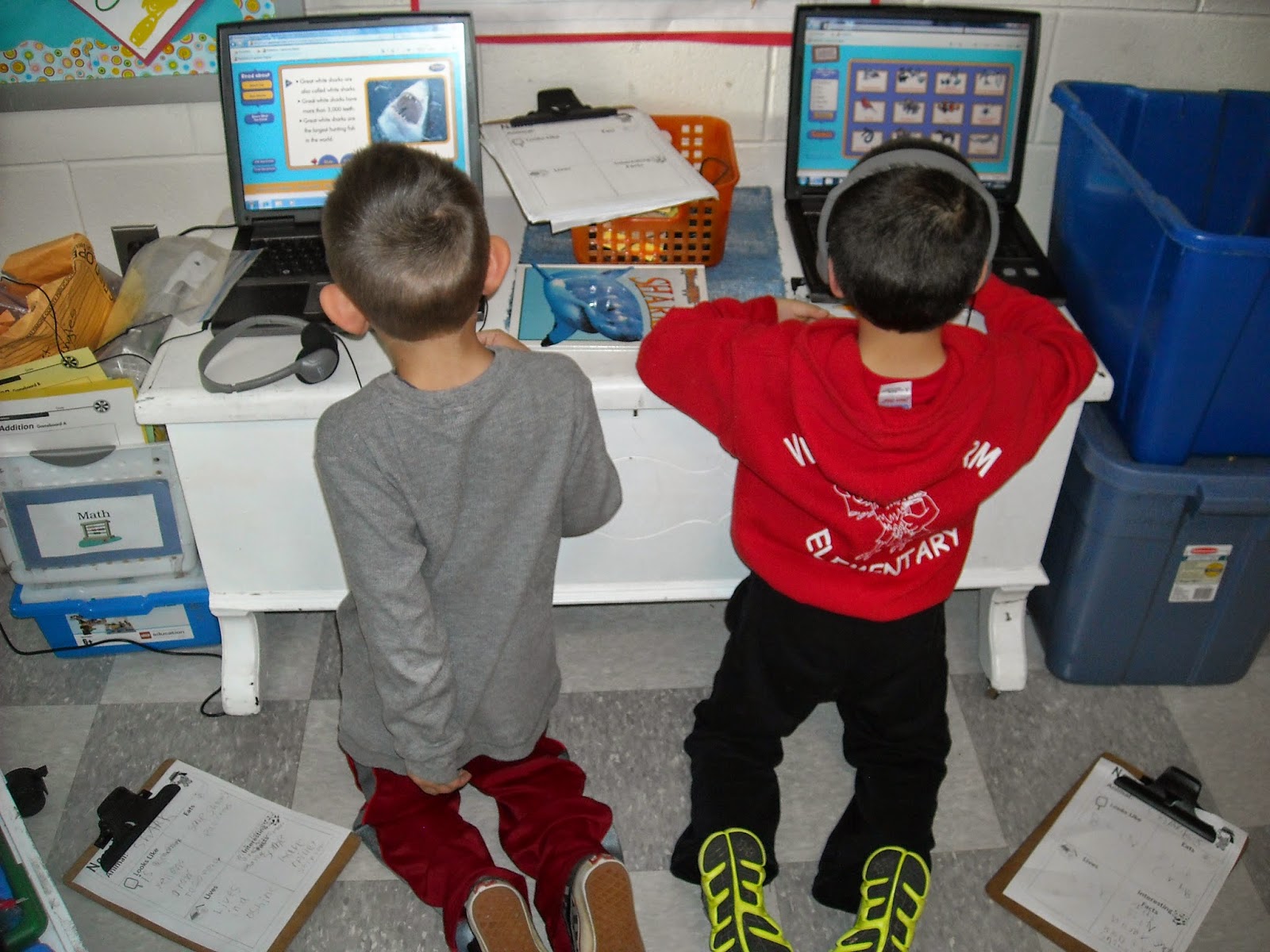Dear
First Grade Families,
 In reading, Evan shares that we’ve been learning the difference between fiction
and nonfiction. London shares that nonfiction books have photographs and show real
information.
In reading, Evan shares that we’ve been learning the difference between fiction
and nonfiction. London shares that nonfiction books have photographs and show real
information.  In our writing center, we have choices! Akirah has made a choice to
research owls on PebbleGo.com with Asiyah and Julia. Lucas and Alex have
turned their research into informational posters teaching others about
dinosaurs—ROAR! Jacob L. has been writing imaginative stories with
Luke A. about gingerbread men and a big, fat policeman. Payton has been
choosing word work and using her phonics words to practice spelling. In
writing, Gracelyn and Payton are working on a nonfiction book about tigers.
In our writing center, we have choices! Akirah has made a choice to
research owls on PebbleGo.com with Asiyah and Julia. Lucas and Alex have
turned their research into informational posters teaching others about
dinosaurs—ROAR! Jacob L. has been writing imaginative stories with
Luke A. about gingerbread men and a big, fat policeman. Payton has been
choosing word work and using her phonics words to practice spelling. In
writing, Gracelyn and Payton are working on a nonfiction book about tigers. Science has been super! Jacob S. shares that we are working on models,
and yesterday we made moon out of clay and phases of the moon out of
Oreo’s. Luke A. shares that today we measured how high the moon is using
handspans.
Science has been super! Jacob S. shares that we are working on models,
and yesterday we made moon out of clay and phases of the moon out of
Oreo’s. Luke A. shares that today we measured how high the moon is using
handspans.
In math, Mckenzie says we
wrote numbers on sentence strips. Chase adds that we are also are
counting all the way up to 200. Here
is Akirah’s counting!
Happy
Holidays and Feliz Navidad,
Mrs.
Y’s First Graders












